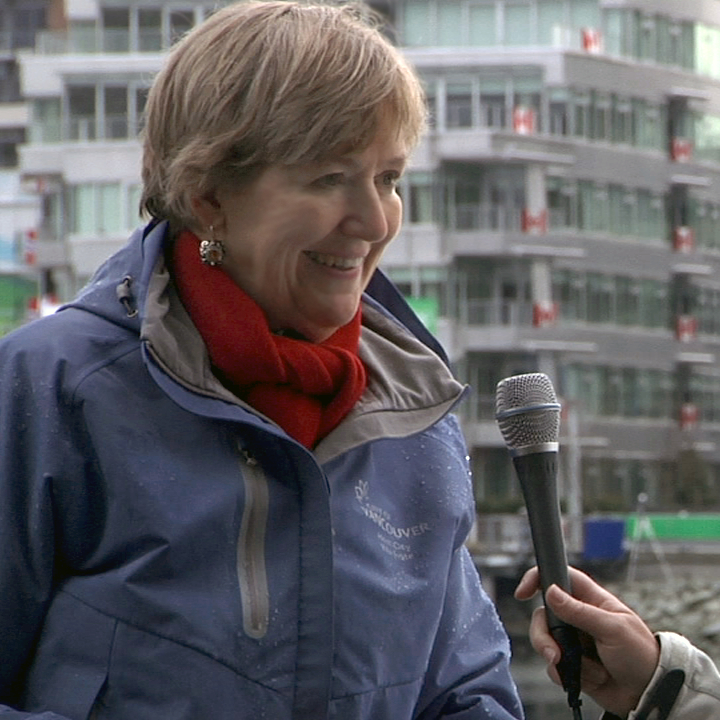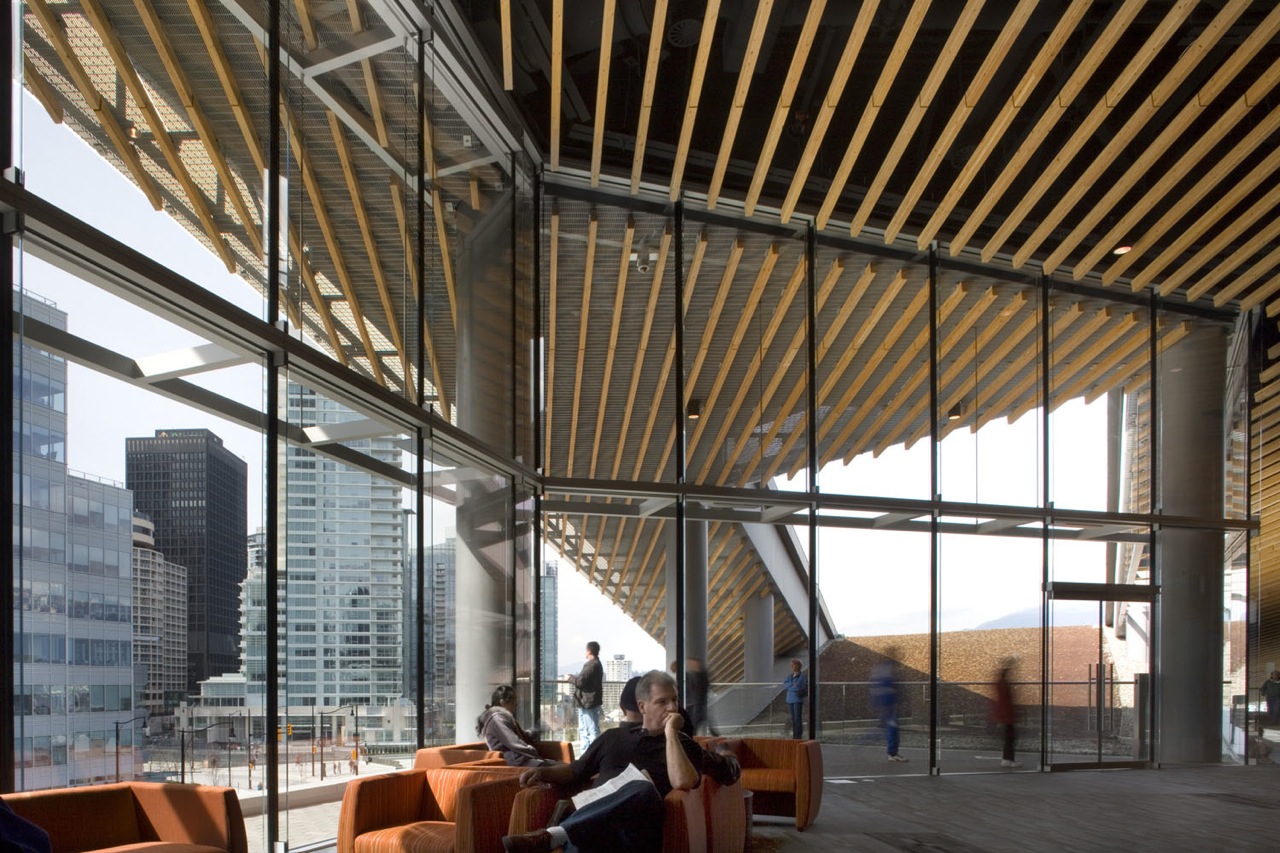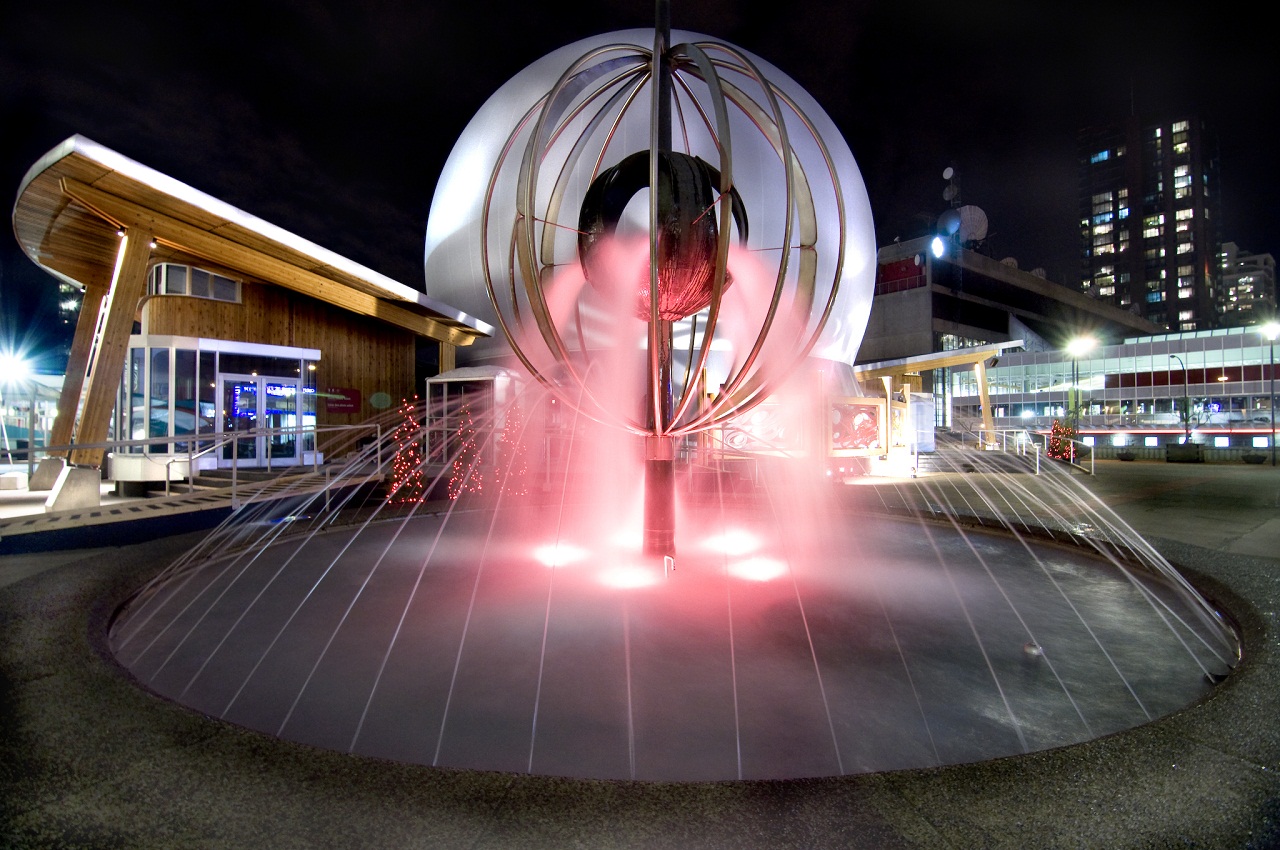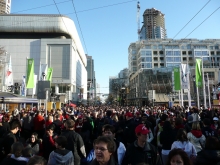Vancouver City Councillor Suzanne Anton on Eco-Density
Video
Vancouver models much of its urban planning on the principle of eco-density, a term developed largely by City Councillor Suzanne Anton. There was no better place for us to interview Suzanne than at the Coopers Pointe on the waterfront looking across toward the Olympic Village. While in Vancouver, we wanted not only to cover the Olympic architecture but to grasp the essence of a city which is reputed for its very low ecological footprint per capita. It is no coincidence, I believe, that William Rees and Mathis Wackernagel developed the concept of an ecological footprint at The University of British Columbia.
 In fact, right now Mayor Gregor Robertson of Vancouver plans to make the city, "the greenest in the world by 2020," according to his new 10-year plan.
In fact, right now Mayor Gregor Robertson of Vancouver plans to make the city, "the greenest in the world by 2020," according to his new 10-year plan.
Robertson's plan incorporates the following initiatives:
- Making the city a mecca for green enterprise by setting up a low-carbon economic development zone. This zone is intended to attract investment for advancing renewable energy and energy-efficient, low-carbon technologies, with the object of creating 20,000 new green jobs.
- Eliminating Vancouver’s dependence on fossil fuels with a reduction of greenhouse gas emissions by 33 percent from 2007 levels. Already, Vancouver produces just under five tonnes per capita with only a few cities in Europe bettering that, Robertson said.
- Making Vancouver a world leader in the design and construction of green buildings and, by 2020, making all new construction in the city carbon-neutral, while improving the efficiency of existing buildings by 20 percent.
- Encouraging greater green mobility by having more than 50 percent of residents walking, cycling or using public transit to move around the city.
- Reducing by 40 percent the amount of solid waste per capita that goes to landfills or is incinerated.
- Giving every citizen easy access to nature by providing “incomparable access to green spaces,” partly by expanding “the world’s most spectacular urban forest in Stanley park,” so that by 2020 every person would live within a five-minute walk of a park, beach or greenway. Another 150,000 trees will be planted in the city within the next 10 years.
- Reducing the ecological footprint of Vancouver by 33 percent on the way to realizing the “one-planet footprint.” Robertson said the city now has a “four-planet” level of consumption and waste, and the goal is to reduce this footprint from seven hectares to 1.8 hectares per person.
- Maintaining the highest international standards for drinking water but reducing the per-capita consumption of water by 33 percent.
- Achieving the cleanest air of any major city in the world.
- Becoming a global leader in urban food systems and reducing the carbon footprint of food production by 33 percent.
Olympic Spotlight
2010 Olympics Begin: Vancouver Convention Center
The Olympics: Vancouver Sets the Green Stage
A Remarkable Torch Starts the Olympics Opening Ceremony
Vancouver Gathers At Robson Sq
Going Even Greener
Vancouver already has the lowest carbon footprint of any other large North American city, per the Vancouver Environmental News Examiner, and is right on track to meet the Kyoto Agreement. The Olympic architecture was designed to be a part of meeting the city's very reasonable goal of reducing its emissions to 14% below 1990 levels. As Suzanne Anton told us along Vancouver's waterfront, "All of our Olympic buildings were designed to serve a purpose once the games are completed."

Stephanie Aurora Lewis
Stephanie, an NCARB registered architect and LEED AP, draws upon her studies in architectural history and theory from Sarah Lawrence College and her master’s degree in architecture from The Ohio State University. Providing copy for publications and performing marketing work for the construction industry, Stephanie works as an independent freelancer from Columbus, Ohio.
Website: greengaloredesigner.blogspot.com/




